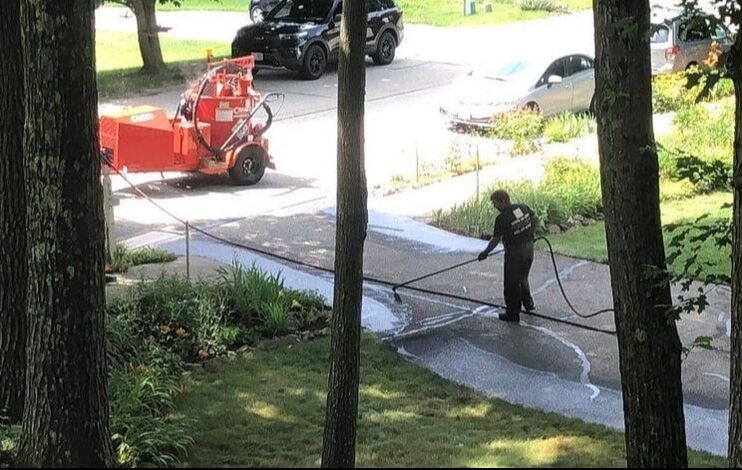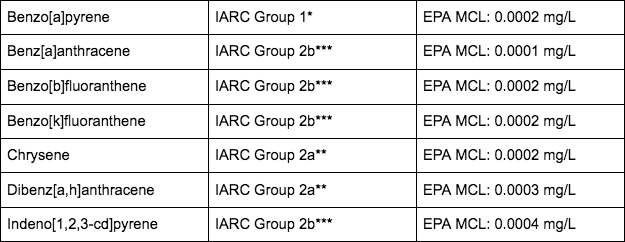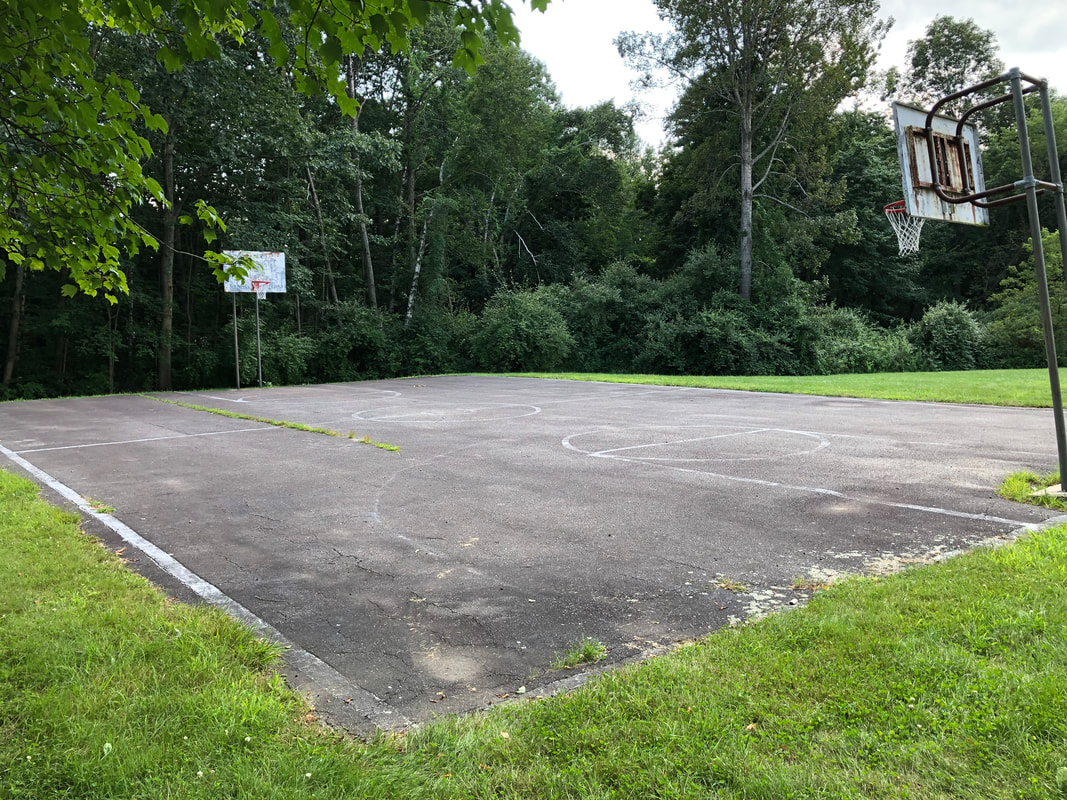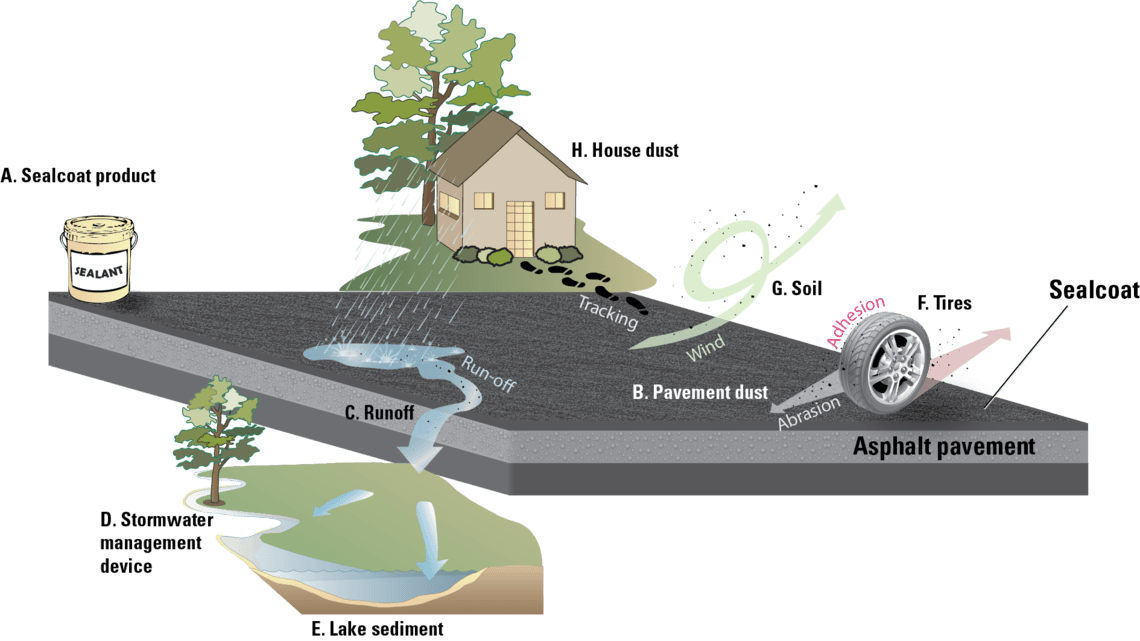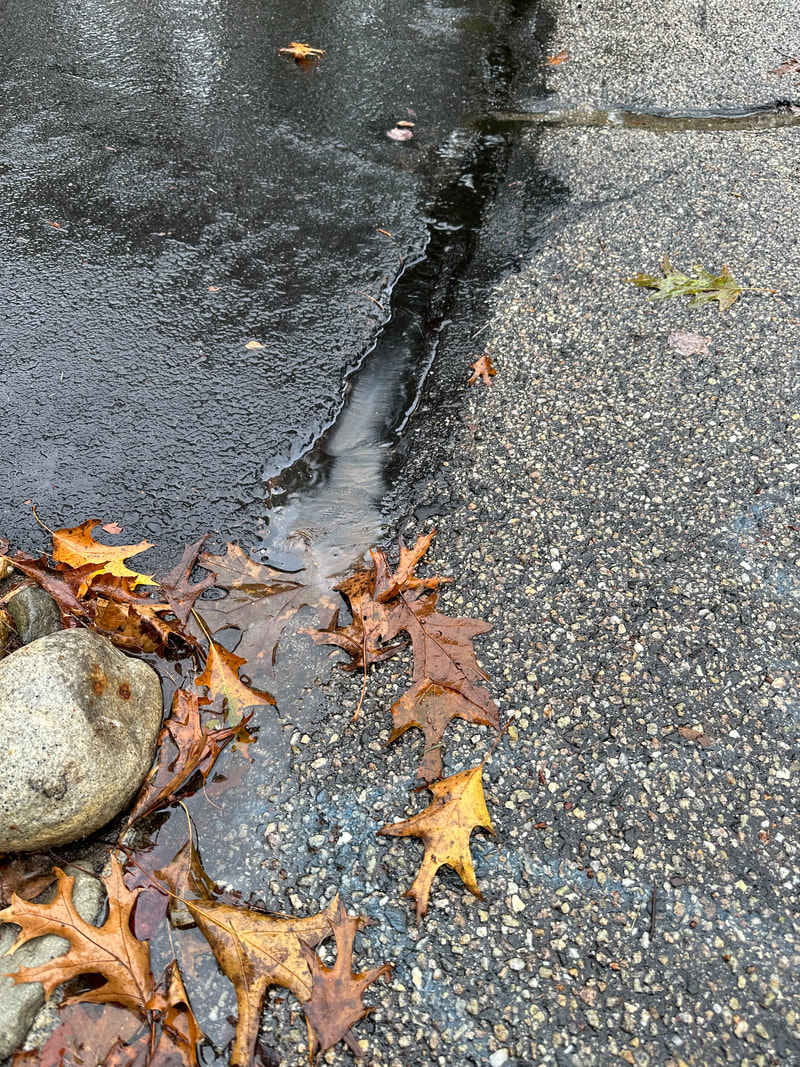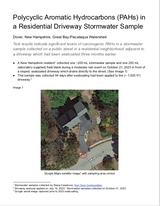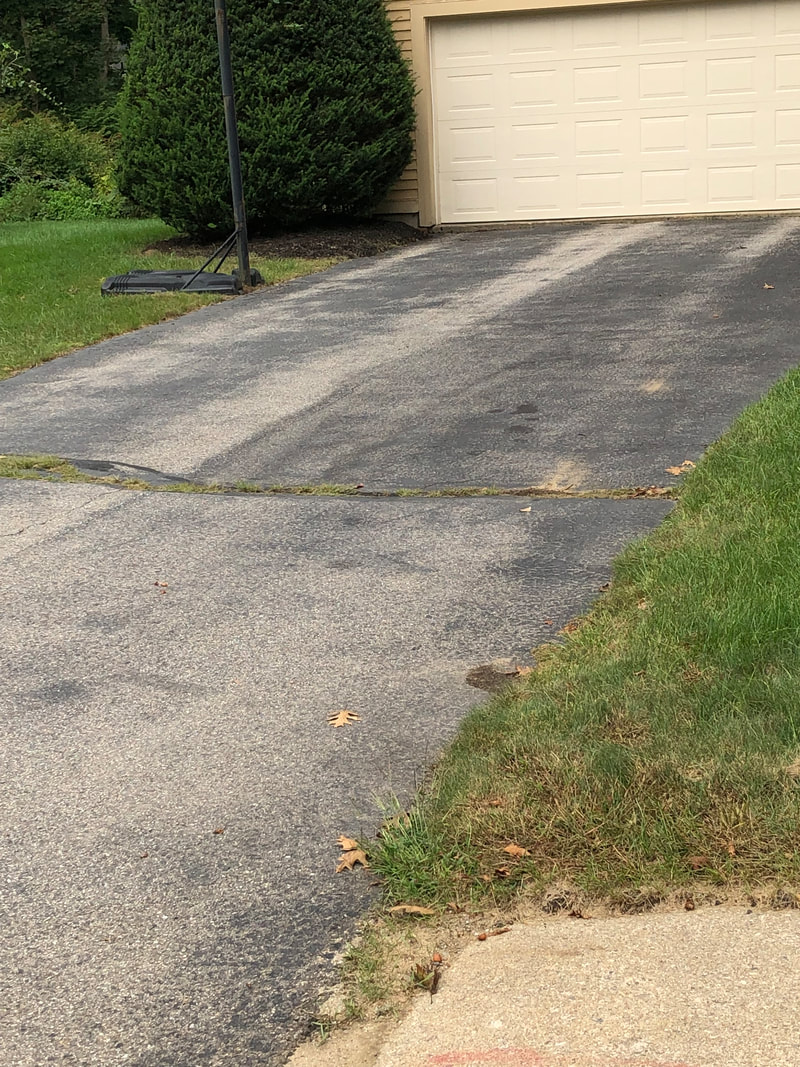All across the country, sealants are applied to asphalt driveways and parking lots. Though this is a commonplace practice, there are serious risks associated with the use of these products.
Coal-Tar Based Sealants
Coal-tar sealants are a by-product of the steel manufacturing industry and a well-documented threat to human health and the environment. Coal-tar based sealants are used most commonly in the regions east of the Continental Divide. They contain extremely high levels of more than 200 types of polycyclic aromatic hydrocarbons, called PAHs for short. This is because they are made from about 25-30% coal-tar pitch, which is 50% or more PAHs by weight, about 1000 times more than some asphalt based sealants.
Asphalt Based Sealants
Asphalt based sealcoat is used most often on the western side of the Continental Divide. Though they are thought to contain lower levels of PAHs, many of these products have been shown by testing to have levels that are closer to coal-tar based sealants. This is thought to be because they contain heavy pyrolyzed oil as an ingredient, which is known to contain “considerable” levels of PAHs according to the Environmental Protection Agency (EPA).
Polycyclic Aromatic Hydrocarbons and Cancer
Many PAHs are considered carcinogens. Seven carcinogenic PAHs have regulatory limits set by the EPA. (See table below.)
The EPA recommends a maximum contaminant level goal (MCLG) of zero for these seven PAHs in ambient water and has set very low maximum contaminant level (MCL) enforceable limits for drinking water from 2 to 4 parts per billion.
The World Health Organization’s International Agency for Research on Cancer (IARC) has classified these PAHs and others according to a hazard evaluation that looks at how likely they are to cause cancer in humans.
The EPA recommends a maximum contaminant level goal (MCLG) of zero for these seven PAHs in ambient water and has set very low maximum contaminant level (MCL) enforceable limits for drinking water from 2 to 4 parts per billion.
The World Health Organization’s International Agency for Research on Cancer (IARC) has classified these PAHs and others according to a hazard evaluation that looks at how likely they are to cause cancer in humans.
* Carcinogenic to humans ** Probably carcinogenic to humans *** Possibly carcinogenic to humans
PAHs cause DNA damage that can lead to cancer. The World Health Organization (WHO) says, “PAHs in ambient air are associated with increased cancer incidence in exposed populations. Positive associations have been reported between ambient PAHs and breast cancer, childhood cancers and lung cancer.”
People are exposed to PAHs from driveway sealants by inhalation, ingestion and skin contact. The dust in homes adjacent to sealcoated pavement has been found to contain up to 25 times higher levels of PAHs compared to homes near unsealed pavement. Living near sealcoated pavement can increase lifetime excess cancer risk by 38 times on average from exposure to household dust alone. Children are at the highest risk.
Due to the “harmful carcinogens” in coal-tar and other driveway sealants, the American Medical Association adopted a policy in 2016 that “advocates for legislation either to ban the use of pavement sealcoats containing polycyclic aromatic hydrocarbons (PAH) or to mandate the use of sealcoat products with minimal PAH.”
Other Health Effects of PAHs
Polycyclic aromatic hydrocarbons are also linked to reduced lung function, exacerbation of asthma, and increased rates of obstructive lung diseases and cardiovascular diseases. There is also emerging evidence that suggests adverse effects on children’s cognitive and behavioral function.
Sixteen PAHs are designated as High Priority Pollutants by the Environmental Protection Agency (EPA) because of their toxicity, and persistence and prevalence in the environment.
Sixteen PAHs are designated as High Priority Pollutants by the Environmental Protection Agency (EPA) because of their toxicity, and persistence and prevalence in the environment.
Air and Water Quality
Have you ever noticed a strong smell coming from sealed blacktop? That odor is from the off-gassing of the volatile chemicals in the sealant. Many PAHs are volatile and we are exposed to them by breathing in these fumes.
According to the Centers for Disease Control and Prevention (CDC), one of the primary sources of exposure to PAHs for most of the U.S. population is inhalation from PAHs in ambient air - like those from wood and tobacco smoke, or vehicle emissions.
One study published in 2012 concluded that “PAH emissions from new coal-tar-based sealcoat applications each year…are larger than annual vehicle emissions of PAHs for the United States.”
According to the Centers for Disease Control and Prevention (CDC), one of the primary sources of exposure to PAHs for most of the U.S. population is inhalation from PAHs in ambient air - like those from wood and tobacco smoke, or vehicle emissions.
One study published in 2012 concluded that “PAH emissions from new coal-tar-based sealcoat applications each year…are larger than annual vehicle emissions of PAHs for the United States.”
The WHO Working Group on Polycyclic Aromatic Hydrocarbons state in their report that:
“Overall, the present scientific evidence suggests that the PAHs in ambient air are associated with increased cancer incidence in exposed populations. Positive associations have been reported between ambient PAHs and breast cancer, childhood cancers and lung cancer. Epidemiological studies have shown that PAHs are associated with reduced lung function, exacerbation of asthma, and increased rates of obstructive lung diseases and cardiovascular diseases. Limited epidemiological evidence also suggests adverse effects on cognitive or behavioural function in children. For several PAHs that are carcinogenic air pollutants, a lowest possible exposure should be aimed at to minimize the risk of cancer development in view of a no-effect threshold."
Non Toxic Communities tested stormwater runoff from a residential driveway over 90 days after a coal-tar based sealant application and found high levels of 11 different PAHs. Six PAHs were measured at levels up to ten times higher than EPA drinking water limits.
Scientific research demonstrates toxicity to aquatic organisms from runoff collected at over 100 days after sealing, even when diluted by a factor of ten. Exposure at these levels were lethal to fish and caused DNA damage as well as impaired DNA repair.
More Cosmetic than Protectant
Driveway sealant products are sold and marketed as “protectants” that are supposed to “winterize” a driveway, shielding the surface from the elements and wear. But when these claims are examined, they simply don’t hold up to scrutiny.
It is evident to the naked eye that normal use results in the sealant wearing away from sunlight, rain, foot traffic and vehicle tires. Companies are happy to recommend re-application once every 1-5 years.
The only necessary maintenance needed for an asphalt driveway is prompt filling of cracks that appear. Sand can be applied to the top of the filler to blend it into the driveway for a more aesthetically pleasing appearance. Sealcoating a driveway will not cover the resulting degradation from an improper installation.
The only necessary maintenance needed for an asphalt driveway is prompt filling of cracks that appear. Sand can be applied to the top of the filler to blend it into the driveway for a more aesthetically pleasing appearance. Sealcoating a driveway will not cover the resulting degradation from an improper installation.
States, Municipalities and Retailers Taking Action
Ace, Lowes and Home Depot have all stopped selling driveway sealants made with coal tar, which is a step in the right direction.
Dozens of states and municipalities have taken action to restrict the use of coal-tar and other high PAH sealants. Maryland is one recent state to legislate sealants statewide. Beginning in 2023, sealants above 1% PAH are restricted. Washington D.C. has a high PAH ban as well. Over 40 other states and municipalities have passed regulations on the use of high PAH sealant products.
Dozens of states and municipalities have taken action to restrict the use of coal-tar and other high PAH sealants. Maryland is one recent state to legislate sealants statewide. Beginning in 2023, sealants above 1% PAH are restricted. Washington D.C. has a high PAH ban as well. Over 40 other states and municipalities have passed regulations on the use of high PAH sealant products.
What You Can Do
Each of us can take action in these ways:
Educate yourself - Learn about the risks and alternatives to sealants.
Educate others - Inform friends and neighbors so they can avoid harm from exposure to toxic driveway sealants.
Ask Legislators to regulate high PAH driveway sealants - Talk to local and state decision makers about restricting the use of high PAH sealants to protect our air, water, soil and community health.
Educate yourself - Learn about the risks and alternatives to sealants.
Educate others - Inform friends and neighbors so they can avoid harm from exposure to toxic driveway sealants.
Ask Legislators to regulate high PAH driveway sealants - Talk to local and state decision makers about restricting the use of high PAH sealants to protect our air, water, soil and community health.
referEnces
EPA Stormwater Best Management Practice Coal-Tar Sealcoat, Polycyclic Aromatic Hydrocarbons, and Stormwater Pollution
Coal Tar Free America Product PAHs
EPA Other Carcinogenic PAHs
Human health effects of polycyclic aromatic hydrocarbons as ambient air pollutants - Report of the Working Group on Polycyclic Aromatic Hydrocarbons of the Joint Task Force on the Health Aspects of Air Pollution
Coal-Tar-Based Pavement Sealcoat—Potential Concerns for Human Health and Aquatic Life
AMA urges legislation to ban dangerous coal-tar sealcoats
Public Health Statement for Polycyclic Aromatic Hydrocarbons (PAHs)
PAH volatilization following application of coal-tar-based pavement sealant
Photoirradiation of Polycyclic Aromatic Hydrocarbons with UVA Light – A Pathway Leading to the Generation of Reactive Oxygen Species, Lipid Peroxidation, and DNA Damage
Why sealing your blacktop driveway is pointless
Air Quality and Coal Tar Pavement Sealers, the State of the Science
US Coal Tar and High PAH Sealant Bans and Government Restrictions
Coal Tar Free America Product PAHs
EPA Other Carcinogenic PAHs
Human health effects of polycyclic aromatic hydrocarbons as ambient air pollutants - Report of the Working Group on Polycyclic Aromatic Hydrocarbons of the Joint Task Force on the Health Aspects of Air Pollution
Coal-Tar-Based Pavement Sealcoat—Potential Concerns for Human Health and Aquatic Life
AMA urges legislation to ban dangerous coal-tar sealcoats
Public Health Statement for Polycyclic Aromatic Hydrocarbons (PAHs)
PAH volatilization following application of coal-tar-based pavement sealant
Photoirradiation of Polycyclic Aromatic Hydrocarbons with UVA Light – A Pathway Leading to the Generation of Reactive Oxygen Species, Lipid Peroxidation, and DNA Damage
Why sealing your blacktop driveway is pointless
Air Quality and Coal Tar Pavement Sealers, the State of the Science
US Coal Tar and High PAH Sealant Bans and Government Restrictions
LEARN MORE
United States Geological Survey Coal-Tar-Based Pavement Sealcoat, PAHs, and Environmental Health
Coal Tar Free America
Listen to Dr. Ryan Rogers of the National High Magnetic Field Lab tell the story of how he became aware of the problem of high PAH sealants. Skip to "The phone call that blew us away..." at 25:32
